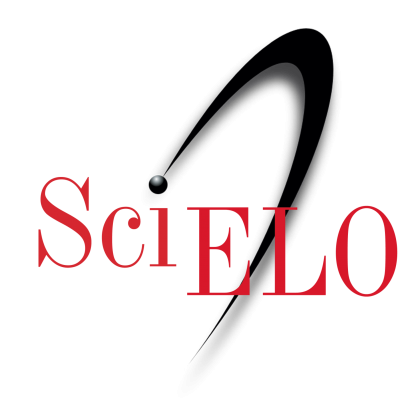DOI:
https://doi.org/10.14483/calj.v18n2.10014Published:
2016-07-18Issue:
Vol 18, No 2 (2016) July-DecemberSection:
Reflections on PraxisOlowalu review: Developing identity through translanguaging in a multilingual literary magazine
Revista Olowalu: El desarrollo de la identidad a través del translingualismo en una revista literaria multilingüe
Keywords:
identidad, la escritura creativa L2, literatura L2, multilingüismo, translanguaging (es).Keywords:
Multilingualism, translanguaging, identity, L2 creative writing, L2 literature (en).Downloads
References
Alim, H. S., Ibrahim, A., & Pennycook, A. (2009). Global linguistic flows: Hip hop cultures, youth identities, and the politics of language. London, UK: Routledge.
Amos, K. (2015). E lei. Olowalu Review 1. Retrived from http://olowalureview.wix.com/olowalureview#!e-lei/cm6k.
Anzaldúa, G. (1987). Borderlands/La Frontera. San Francisco, CA: Spinsters / Aunt Lute Book Company.
Baldacci, L. (2015). Calle San Miguel. Olowalu Review 1. Retrieved from http://olowalureview.wix.com/olowalureview#!calle-san-miguel/c208c.
Canagarajah, S. (2011). Translanguaging in the classroom: Emerging issues for research and pedagogy. In L. Wei (Ed.), Applied Linguistics Review, 2 (pp. 1–27). New York, US: Walter de Gruyter.
Canagarajah, S., & Liyanage, I. (2012). Lessons from pre-colonial multilingualism. In M. Martin-Jones, A. Blackledge, & A. Creese (Eds.), The Routledge handbook of multilingualism (pp. 49–65). London, UK: Routledge.
Cenoz, J. (2013). Defining multilingualism. Annual Review of Applied Linguistics, 33, 3-18.
Davis, K. (2009). Agentive youth research: Towards individual, collective and policy transformations. In T.G. Wiley, J.S. Lee & R. Rumberger (Eds.), The Education of Language Minority Immigrants in the USA (pp. 202–239). Clevedon, UK: Multilingual Matters.
De Mejía, A.M. (2005). Bilingual education in South America. Buffalo, NY : Multilingual Matters.
Garcia, O. & Wei, L. (2013). Translanguaging: Language, bilingualism and education. New York: Palgrave Macmillan.
García, O., Zakharia, Z. & Otcu, B. (2013). Bilingual Community Education for American Children: Beyond Heritage Languages in a Global City. Bristol, UK: Multilingual Matters.
Hara, T. (2015). Time goes by. Olowalu Review 1. Retreived from http://olowalureview.wix.com/olowalureview#!time-goes-by/ca2w.
Phillipson, R. (2003). English-only Europe?: Challenging language policy. New York: Routledge.
Sayer, P. (2013). Translanguaging, TexMex, and bilingual pedagogy: Emergent bilinguals learning through the vernacular. TESOL Quarterly, 47(1), 63-88.
Skutnabb-Kangas, (2000). Linguistic human rights and teachers of English. In Hall, J.K. & Eggington, W.G. (Eds.), The sociopolitics of English language teaching. Clevedon, UK: Multilingual Matters (pp. 22–44).
Swain, M. (2006). Languaging, Agency and Collaboration in Advanced Second Language Learning in H. Byrnes (Ed.), Advanced Language Learning: The Contributions of Halliday and Vygotsky (pp. 95–108). London, UK: Continuum.
Wei, L. (2010). Moment Analysis and translanguaging space: Discursive construction of identities by multilingual Chinese youth in Britain. Journal of Pragmatics, 43(5), 1222-1235.
How to Cite
APA
ACM
ACS
ABNT
Chicago
Harvard
IEEE
MLA
Turabian
Vancouver
Download Citation
DOI: http://dx.doi.org/10.14483/calj.v18n2.10014
REFLEXION ON PRAXIS Olowalu Review: Developing identity through
translanguaging in a multilingual literary magazine
Revista Olowalu: El desarrollo de la identidad a través del
translingualismo en una revista literaria multilingüe
Alex Josef Kasula1
Citation/ Para citar este artículo: Kasula, A. J. (2016). Olowalu Review: Developing identity through translanguaging in a multilingual literary magazine.
Colomb. Appl. Linguist. J., 18(2), pp. 109-118.
Received: 27-Jan-2016 / Accepted: 08-Jun-2016 Abstract With the current trends in our globalized society, there is a clear increase in multilingualism; however, the
understanding of multilingual identity and policy towards education stays relatively the same. Recent investigation
in multilingualism in the US has shed light on the positive impacts of alternating policy in language education with
regard to a greater understanding of how translanguaging and identity impact the language learner and language
learning policies (García & Wei, 2013). The following article describes the development of an online multilingual literary
magazine, Olowalu Review, that aimed to provide English language learners in an English-only language policy with
a space to translanguage. Thus, having the opportunity to develop and express their multilingual identities. Goals and
the development of the magazine are described in terms relating to current multilingual theory. While the outcomes and
findings reveal how Olowalu Review enabled multilinguals to foster and exercise multilingual identities and skills, raise
multilingual awareness, and act as an important multilingual artifact through an analysis of written submissions and
interviews with authors. Pedagogical implications are discussed to empower language teachers, learners, or artists to develop the same or similar project for their own local, national, or global community.
Keywords: identity, L2 creative writing, L2 literature, multilingualism, translanguaging. Resumen Con las tendencias actuales en nuestra sociedad globalizada, vemos un aumento en el multilinguismo; sin
embargo, el entendimiento de la identidad y la política multilingüe hacia la educación se mantiene relativamente
igual. Investigaciones recientes en multilingüismo en los EE.UU. ha arrojado luz sobre los impactos positivos de la
alternancia política en el lenguaje educativo con respecto a un mayor entendimiento en cómo el translanguaging y la
identidad impactan al estudiante de idiomas y las politicas de aprendizaje de idiomas (García y Wei, 2013). El siguiente
artículo describe el desarrollo de una revista literaria multilingüe en línea, Olowalu Review, la cual tuvo como objetivo
proporcionar a los estudiantes de inglés en un inglés único de política lingüística en un espacio para translanguage.
De esta manera tener la oportunidad de desarrollar y expresar sus identidades multilingües. Las metas y el desarrollo
de la revista se describieron en términos relativos a la teoría multilingüe actual. Si bien los resultados y hallazgos
revelan cómo Olowalu Review se habilitó multilingüe para fomentar y ejercer las identidades y habilidades multilingües,
aumentar el conocimiento multilingüe y actuar como un importante artefacto multilingüe a través de un análisis de las comunicaciones escritas y entrevistas con los autores. Las implicaciones pedagógicas se discutieron para permitir a
los profesores de idiomas, estudiantes o artistas desarrollar el mismo o un proyecto similar para su propia comunidad local, nacional o global. Palabras clave: identidad, la escritura creativa L2, literatura L2, multilingüismo, translanguaging. Introduction As the understanding of multilingualism in the
growing globalized society and in the language
learning classroom begins to expand, there is a
clear need for teachers, students, and policy to
understand how this effects the identities of learners
and speakers of more than one language. The ideas
of national languages are beginning to diminish,
as the global flow of people and information is
more rapid than ever, making a visible path for a
stronger role of multilingualism in language learning
classrooms. The work of García, Zakharia, and Otcu
(2013) reveals how in falsely understood monolingual
societies like New York City, U.S.A., being a
multilingual is common and the need for education
to be a reflection of the identities of those who are
learning and teaching. Multilingualism expands
beyond just that of super-diverse communities like
seen in New York City, but also throughout the world
as language requirements are becoming a core part
of educational curriculum. There is a clear demand for pedagogy and
course design to meet the ever-changing identities
of multilingual language learners. Therefore, a
distinct understanding of what is 'multilingualism’
is necessary for all stakeholders in language
learning to comprehend in order to progress
the ways of teaching and learning to sufficiently
reach the rapidly changing language use of the
learners. Cenoz (2013) describes the holistic view
of multilingualism in which multilingual speakers
use their linguistic resources in ways that are
different from the way monolingual speakers use
single languages. Although a number of more
specific definitions have stemmed from a general
understanding of multilingualism, the current
definition adequately depicts multilingualism
in the context of translanguaging and the
pedagogical implications this article aims to
provide the readers. The following article will discuss how the
development of an online multilingual literary
magazine for English language learners can act
as an effective outlet for multilinguals or emerging
multilinguals to express their multiple identities,
while also providing the opportunity for learners
to exercise the language skills they are learning.
To understand how to approach multilingualism in
the English language learning (ELL) classroom, it
is vital to grasp what is occurring with multilinguals
in regards to their self-identity and how this can be
expressed in class activities beyond what occurs
directly in the classroom. Identity and Translanguaging A number of societies and populations around
the world are multilingual; a clear example are the
urban dwellings in the U.S. that hold a large diversity
of multilingual speakers (see García, Zakharia, &
Otcu, 2013 for a list of languages spoken other than
English in New York City). Multilingualism expands
beyond the U.S. as globalization demands citizens
from all nations to acquire a second language,
primarily languages of former imperialistic societies,
such as English, French, Spanish, Mandarin Chinese,
and so on. This does not account for societies
across the world that practiced multilingualism prior
to global colonialism and modern globalization (see
Canagarajah & Liyanage, 2012, for a more elaborate
discussion). With an increase in multilingualism
throughout the world, the questions of "how do these
multilinguals communicate?"; "how do multilinguals
manage the uses of their multiple languages?";
and "how do multilinguals use language to identify
themselves?" begin to emerge. Translanguaging
is a social concept that aims to discuss the use of
language among multilinguals, and is a common
phenomenon among multilinguals playing a
fundamental role in terms of communication,
identity, and power. Translanguaging is an approach
to the use of language that considers the language
practices of multilinguals not as using two or
more autonomous language systems as has been
traditionally the case, but as one linguistic repertoire
with features that have been societally constructed
as belonging to two separate languages (García
& Wei, 2013). For a visible contextualization of
translanguaging in literature see Excerpt 3. Translanguaging is a common phenomenon for
multilinguals, at points feeling the most natural form
of communication or expression. Translanguaging
acknowledges the multiple identities and languages
of its speakers through creating a space where
values, culture, language, and history can be
expressed. In this space, one is languaging, which
is the process to gain knowledge, make sense, or
communicate by putting one’s thought into actual
form (Swain, 2006; Wei, 2010). Wei continues to
describe how the translanguaging space "is not a
space where different identities, values and practices
simply co-exist, but combine together to generate
new identities, values and practices" (p. 1223).
Although this space is fluid and ever changing for
those who inhabit it, it provides the opportunity for
expression of multilinguals, as many multilingual
environments are falsely perceived as monolingual.
A clear example is in the U.S. education system.
Although multilinguals make up a large portion
of students attending public schools in the U.S.,
many are forced into speaking in English through
the "English-only" policy, and in turn multilinguals
are put at a disadvantage, inevitably forced into
circumstances where their linguistic identities and
translanguaging space are suppressed (García,
Zakharia, & Otcu, 2013). The use of "Englishonly"
policies extends beyond languages where
English remains understood as national language.
English-only policies, or monolingual polices, can
be found across language learning environments
geographically and linguistically, with clear examples
in Europe (Phillipson, 2003) and South America (De
Mejía, 2005). Nevertheless, when multilinguals and their
identities are accepted, appreciated, and heard,
these multilinguals become empowered, fostering
the equity needed in democratic societies (see
Davis, 2009, for an example of empowering
multilingual youth). The ability to use the full
linguistic repertoire through translanguaging and
abolish the enslavement of multilinguals into one
"standard" language space not only promotes
equity and appreciation of cultural differences but
can also be viewed as an innate right. Phillipson
(1998) describes how multilingualism strongly
connects with human rights by allowing speakers
to express their linguistic diversity and counteract
linguistic dominance. It is the responsibility of the
stakeholders in language education to transform or
provide space for translanguaging as it not only can
be a useful resource for learning and communicating
but also help foster identities of learners, promoting
a more democratic and equal environment. Offering
opportunities to translanguage gives voice to those
who are marginalized, to those still wandering the
borderlands of language. Translanguaging Theory to Practice Although translanguaging is a rather new
term in the field of linguistics, it has long been
a method of expression for those living within
multilingual communities. The work of Gloria
Anzaldúa, Borderlands/La Frontera: The New
Mestiza (1987), describes the lives of multilinguals
living on the "borderlands" of society through her
poetry and short essays. She, a Latina bilingual in
Spanish and English near the Mexico-U.S. border,
translanguages to express the lives of people within
her multilingual community. In Anzaldúa’s work a
strong focus is on the individuals in the borderlands
and the perplexity with their identity and sentiment of
living on the fringes of two societies, not being fully
accepted into one, or the other. Providing the space
for translanguaging of language learning students
could not only erase the borders felt in Anzaldua’s
work but also be the place to foster new identities
and opportunities to learn. As mentioned above, there may be initial
negative recoil from the misunderstood genuineness
of translanguaging, specifically where monolingual
policies are strict. García, Zakharia, and Otcu (2013)
clearly displays how teachers can become facilitators
of translanguaging spaces in the classroom, even if
they are unfamiliar with the students’ first language
(L1) or second language (L2). García, Zakharia,
and Otcu also illustrate the positive effects of
a translanguaging space, where students and
community feel more involved and exceed the
standards of the class. By giving the opportunity
to express language through translanguaging,
leaners have the ability to draw on resources from
any language in their linguistic repertoire and
feel comfortable using these resources (García,
Zakharia, & Otcu, 2013). Although there is not a
sufficient claim that translanguaging will increase
language "skill", it does open the door for practicing
literary skills required of the target and native
languages. Sayer (2013) found that in a multilingual
elementary classroom the use of an adaptable
bilingual pedagogy increased translanguaging in
the classroom, helping students to make sense of
content and learn language, while also legitimized
methods of accomplishing desired identities. However, most research has looked at ways
educators have promoted translanguaging inside
the classroom. Providing learners to express
themselves outside of the classroom not only offers
an opportunity for the learners to translanguage but
deepen arts and expression within their own identity
or possibly the community. Translanguaging outside
of the classroom has occurred specifically within art
forms transnationally and transculturally through
the use of international hip-hop (Alim, Ibrahim, &
Pennycook, 2009) and in creative writing literature
(Anzaldúa, 1987). By providing creative outlets for
learners to exercise their multilingualism, activities
such as the development of a literary magazine could
be a one of the simplest yet effective opportunities
for learners to translanguage. Olowalu Review The following sections describe the development
of an online literary magazine, Olowalu Review
(Olowalu meaning "of many voices" in Hawai'ian),
by an ELL instructor at a mid-sized university
in Hawai'i. Olowalu Review was developed
partially due to an "English-only" policy within the
instructor’s own institution of near one-hundred
students, and the lack of opportunities for students
to express their unique multilingual identities. The
English-only policy was highly valued as there was
a fear that students would self-segregate according
to their L1s and not use the target language of the
institution, English. Rather than disobey the longstanding
policies of the department, the instructor
chose to develop a platform outside of class, that
was not only open to his students but also the entire
university, local, and national communities. The lack
of space for the linguistically diverse body of learners
to use their L1, L2, or other languages acquired only
served to increase the need for such a platform of
self-expression through translanguaging. Learners,
restricted within monolingual policies throughout
the university and the country, had very few known
opportunities to express and create new identities or
generate space where their voices could be heard
especially among some of the students’ minority
languages such as Arabic or Hawai'ian. Development and Submissions One of the core elements of any literary magazine
is finding contributors and generating an audience
to read it. Therefore, in order to find contributors
interested in the writing for the magazine, language
department heads at the university were contacted
and asked to email or pass out a paper copy of a
flyer for submissions. Of the thirty-two language
departments at the instructor’s institution, twentyeight
responded and had handed out flyers or
emailed submission details to the enrolled students.
Submissions to Olowalu Review were also posted
on several local Facebook pages for creative writing.
Additionally, to gain wider contribution, diversity
in language use, and to spread translanguaging
awareness, three different contacts at three different
U.S. mainland universities were contacted and
posted submission flyers. Several forms of art
and literature were accepted as a part of Olowalu
Review, including but not limited to poetry, fiction,
nonfiction, and visual art. The only requirement for
submission was that the piece was either creative art
or literature through the use of multilingualism. The second core element during the development
of Olowalu Review was finding a unique, open, and
cost-effective platform to display the submissions.
Therefore, the most efficient and accessible platform
to develop Olowalu Review was through the use of
a free online website designer. The platform selected
was through that of Wix.com, although there are
several resourceful and professional websites to
choose from. However, before submissions and the
development of Olowalu Review could take place,
it was fundamental that the magazine had clear and
distinct goals of what it was trying to accomplish in terms of translanguaging and multilingualism. Goals of Olowalu Review In order to make an impact, spread awareness,
and create a realistic space for translanguaging
to occur, Olowalu Review developed five definite
goals based upon multilingual literature in the field
of language learning. These goals were heavily
influenced by the above literature on multilingualism,
identity, and translanguaging. Below each goal is
described in terms of setting a vision for Olowalu
Review that is consistent with the call for developing
translanguaging spaces for multilingual leaners and
speakers as well as serving as an outlet for art and
expression within the community and larger society.
The goals are as follows: 1) Raise multilingual and translanguaging
awareness. There is clear evidence that the world
is becoming more multilingual and the amount
of students and learners who translanguage is
increasing, as this is a common phenomenon
among multilinguals, regardless if they are confined
within a falsely perceived monolingual environment
of English-only policy (García, Zakharia, & Otcu,
2013). Through raising awareness of multilingualism
and translanguaging, leaners and speakers are
empowered, creating more cultural understanding
and provide a path to understand the borderlands of
language (Davis, 2009). 2) Promote multilingual use and identity.
Multilinguals have stories, experiences, and history
that not only one voice can tell, as seen in Anzaldúa’s
work (1987). It is clear that translanguaging happens
on a global level, for example in transnational hip-hop
(Alim, Ibrahim, & Pennycook, 2009); however, there
are limited known contexts where it is acceptable
for multilinguals to translanguage. To reach the
large amount of multilinguals there needs to be a
variety of platforms for acceptance, expression, and
construction of identity. Olowalu Review acts just
as one of the several platforms that could be used
to do this. 3) Enable speakers and writers to exercise their
multilingual knowledge. Building off of the above
goals, Olowalu Review is open to multilinguals of
any proficiency, age, or linguistic background. One
of its purposes is to be a space where multilinguals or
emerging multilinguals can express themselves and
use resources from their full linguistic repertoire to
practice language or develop identity. 4) Contribute as another resource and example
of translanguage/multilingual literature. With the
lack of artifacts in translanguaging and multilingual
literature, Olowalu Review can act as a foundation
for future research projects or as activities for
pedagogical practices in multilingualism. 5) Promote arts and expression in the local,
national, and global communities. Language is art,
and translanguaging is language. With the ability
to have submission from all over the world through
an online platform the art has the ability to express
local and global perspectives, crossing borders and
borderlands. The understanding and appreciation
of literature and art plays a fundamental role in
challenging current paradigms both individually
internal, and on a societal level. After goals had been established, call for
submissions posted, and the website designed, there
was a three month period in which the instructor
that developed Olowalu Review communicated
with authors and uploaded submissions to the
magazine’s website. Then after the three-month
period, the magazine went live online and was openaccess
to the authors and the public. Following the
magazine going live, the outcomes and findings
of the magazine were examined and feedback was
gathered from the authors. Outcome For the first issue of the multilingual magazine,
expectations of the instructor were met, but not
exceeded. There were a total of twelve submissions
by fourteen contributors that used thirteen different
languages, claiming their "hometown" from eight
different countries. Five of the submissions came
from the instructor’s English language institution,
while eight came from the instructor’s university. The remaining four submissions came from students at
universities in the mainland U.S.A.; a total of seven
poems, four non-fiction short stories, and one
fictional short story were submitted. Table 1 shows
the submission details of the authors. Methodology This article primarily focuses on the praxis
of translanguaging and its potential pedagogical
implications; however, there was a methodology
applied to the analysis of the submissions to
gain a deeper understanding of such a project’s
utility for multilinguals to express themselves in a
translanguaging space. The approach taken by the instructor at the
U.S. institution, who also was the developer of
Olowalu Review and researcher, took a qualitative
approach in interpreting the data but did not have
any participatory involvement influencing the literary
submissions of the authors. He stayed relatively
inactive in the writing process of the authors as
the goals of Olowalu Review, stated above, prefer
Olowalu Review to be a free space of multilingual
literary expression, allowing authors to use their
linguistic repertoire freely, promoting multilingual
use, awareness, and artistic expression. Rather, he
took an editorial approach towards the submissions,
simply responding to inquiries about one-time
submission guidelines. The intention was to allow
translanguaging to happen "naturally" and not
solicited by another individual (Canagarajah, 2011).
However, small-scale interviews were conducted
both via email and in person to seek out perceptions
and attitudes of the writing process from the authors.
Data gathered through interviews did not aim to
understand how the translanguaging occurred but
rather how it complimented what the writers wanted
to express in their literature. Submissions were briefly analyzed by adapting
Canagarajah’s (2013) framework of analyzing
translingual academic essays, identifying the literary
pieces as viewing the submissions as results of
code-meshing, which Canagarajah describes as a
"form of writing in which multilinguals merge their
diverse language resources with the dominant
genre conventions to construct hybrid texts for
voice" (p. 40). Through the lens of code-meshing,
Canagarajah’s four strategies were taken into
consideration into how specifically the author’s
may have used translanguaging to express their
unique literary voice, his four strategies being:
envoicing, recontextualization, interactional,
and entextualization. A brief explanation of each
strategy according to its relevance to the current
project is outlined below according to Canagarajah
(2013, p. 50): Envoicing is the use of translanguaging where
writers mesh semiotic resources for their identities
and interests to explain attitudes representing
writers’ voice. Recontextualization intends to structure the text
according to the desired genre and communicative
conventions. Interactional strategies attempt to aid the
reader and writer to co-construct meaning of the
text through ecological resources and to achieve
understanding despite language differences, and Entexutalization where text construction helps
aid in the author’s voice and meaning, for instance,
in Canagarajah (2013) this was through the use of
numerous drafts, feedback, and revision of one text.
However, this strategy does not apply to the current
project, as the researcher did not aid authors in
revision or feedback of their texts. Canagarajah (2013) describes these four
different strategies as methods of multilinguals
expressing their literary voice as ways of meaning
making through the writers’ semantic resources in
code-meshing. Although meaning making should
always be taken into consideration, the current article
analyzes and discusses these strategies as ways for
the writers to express their multilingual voice within
a completely open translanguaging space. Findings After the online publication of Olowalu Review,
it was clear that all submissions did translanguage
by using more than one language to express the
idea, story, or emotion behind the author. Although
not all submissions were thoroughly probed into
how the translanguaging occurred, it is clear that
the authors who submitted felt they could express
their multilingual voice through creative literature
and translanguaging. When briefly analyzing the
submissions to Olowalu Review, its visible that
each author translanguaged differently, and had
different ways to express their linguistic background
and identities. Also, it is clear that when given the
space, people express themselves through language
differently, with different stories, different languages,
history and culture, thus finding the need to
translanguage differently. Where some pieces used
one language dominantly, others distribute language
use quite evenly throughout their piece. Some
author’s chose to translanguage as a literary device,
creating "linguistic imagery" to convey thoughts or
stories by voicing certain elements of the piece to
awaken the reader’s auditory perceptions. This can
be seen in Excerpt 1. In Excerpt 1, the author conveys her thoughts
by utilizing resources in her full linguistic repertoire
to write about experiences, history, or thoughts
that reflect her voice and identity. However, she
does so by translanguaging as the literary device of
"linguistic imagery," as the excerpt displays external
characters using Spanish and the internal voice
uses English, thus displaying the contrast between
how the protagonist views herself and the perceived
identity of the surrounding characters. Along with translanguaging being utilized as a
literary device to reveal identity, many submissions
simply show that translanguaging is naturally
occurring and not solicited by another individual,
as discussed in Canagarajah (2011). Although it is
not entirely clear if all works use translanguaging
"naturally," regardless it can be appreciated that
the authors then used translanguaging to practice
L2s, or others acquired or studied languages in
attempts to develop an identity within a multilingual
space. Therefore, still fulfilling the conceptual
background behind the support of translanguaging
and multilingualism. Excerpt 1 also shows an
interactional strategy in translingual writing.
Here, the author uses the variation in language to
show a multimodal semiotic cue to represent her
voice and create meaning to her literature. Since
the author cannot rely on shared language for
readers to interpret her writing, her language use
creates a multisensory response to convey her
voice and the meaning of the piece (Canagarajah,
2013). Excerpt 2, below, also begins to show the
interactional translingual strategy. The author uses
the semantic resource of the onomatopoeia "Tick
Tock" to facilitate a co-construction of meaning
to her piece despite the possibility of shared
language norms (Canagarajah, 2013). Excerpt 2
and Excerpt 3 display how translanguaging varies
among multilinguals or emerging multilinguals
when provided the literary space to do so. Where in Excerpt 2 translanguaging occurs
again as a literary device though through the
onomatopoeia of "Tick Tock," the author’s voice
is also heard through the segment only in English
and the alternating phrases spoken in Japanese.
In Excerpt 3, the author uses three languages,
Hawaiian, English, and French interchangeably with
no clear or shifting pattern. Therefore, the exact
meaning of the poem would be rather difficult to
comprehend for someone unfamiliar in these three
languages, again showing that Olowalu Review
created the space for the author’s multilingual
voice to foster unique expressions of identity in
these three languages through translanguaging.
Through the variation of translanguaging among
submissions, it is quite clear that all pieces clearly
display the translingual strategy of envoicing due
to the nature of their creative writing literature. The
unique structure of the pieces themselves, served
as an interpretation into the authors’ writing style,
identity, and voice (Canagarajah, 2013). While some
of Canagarajah’s translingual writing strategies were
not as distinctly visible or as important to discuss,
such as recontextualization and entextualization,
this may be due to the freedom of genre allowed
in Olowalu Review. Whereas recontextualization is
focused on structuring a text according to a genre
and extextualization in the process and drafting
of a text, the fact that these literary pieces were
only categorized according to genre by the author
requiring no structural format, and requiring an
unedited one-time submission makes the current
analysis less rich in its ability to support them.
Although the authors did entail some structure to
their writing, opening a discussion on the translingual
strategy of recontextualization, pursuing a genreanalysis
of submissions was not seen necessary by
the researcher due to the pursuit of analyzing and
viewing the pieces as open literary expression. After several discussions with authors in
regards to their feedback on Olowalu Review, two
prominent perspectives prevailed and motivated
numerous authors to write for the magazine: space
and acceptance. Although a few authors did say
that writing their pieces was a bit challenging, they
viewed the opportunity to submit as a way to practice
the languages they have previously studied. When
asked about the experience they replied with phrases
such as "it was fun," "interesting," and a "good
way to practice." For many, there was an intrigued
sense in why they would do this, but afterwards
having a feeling of enjoyment and satisfaction.
Particular authors were pleased to finally have a
location to publish their work because they in fact
were multilinguals and translanguaging naturally
occurred in their written literature. After interviews
with authors, many found the researcher’s analysis
to be interesting and an interesting discussion on
their own writing and literary voice, showing them
the uniqueness in their multilingual expression, and,
consequently, showing the need for multilingual
spaces not only within language learning
classrooms but also on a much larger scale. One
author in particular felt a great deal of acceptance
through the ability to write in his native language
alongside English. By writing a bilingual poem in
Arabic and English, he felt that in this multilingual
space an identity through both languages could be
expressed. He felt this acceptance was well needed
due to current and historical issues relating to his
native language, culture, and country within the
English speakers’ culture and countries. Developing
translanguaging spaces can help to promote the
feeling of linguistic acceptance and equality which,
being viewed as a clear human right, can transcend greater tolerance towards others. Pedagogical Implications There are several pedagogical implications that
can be drawn from Olowalu Review specifically
relating to the language-learning classroom and
multilingualism. One of the first and most practical
applications from such a project could be developing
language and technology skills. An instructor of a
foreign or second language could create or have
students create websites in the target language.
Since there are a variety of free online website design
platforms to choose from, this is relatively easy as long
as the students have access to a computer or Internet.
Students could then design their own literary magazine,
or branch away from literature and develop a forum on
current issues, culture, history etc., through the use
of translanguaging which provides the opportunity for
students to not only learn technological skills but also
the freedom of linguistic expression. If the instructor or students decide to develop
an online literary magazine open to poetry or other
creative writing, the above findings do show that it
enables learners to function and express themselves
through translanguaging. Although learners will
most likely translanguage differently, it still facilitates
the expansion of the multilingual identity. It may
even be viewed as an opportunity to move towards
a more critical pedagogy on social issues, allow
the expression of those otherwise rather sedentary
in the target language, or promote tolerance and
equity needed in a democratic society. Also, by
providing the opportunity for students to utilize
their full linguistic repertoire, they have the chance
to uniquely practice their L1, L2, acquired, or
target languages. In Olowalu Review, authors
enjoyed writing their pieces and felt a sense of
accomplishment after they submitted. Therefore,
for emerging multilinguals, translanguaging through
creative writing may provide them the resources to
complete the task rather than become unmotivated
by an activity they feel is out of their target language
proficiency. Also, Canagarajah (2013) recommends
that translingual strategies are not explicitly
taught to students, rather that strategies occur
naturally through the students’ own terms through
facilitating awareness raising and the development
of writing practices. This article does not explicitly
discuss awareness raising or development of
writing practices in terms of teaching translingual
strategies; more so it focuses on providing the
space and the awareness of translanguaging’s
existence. Instead, these strategies should be
taken into account in terms of understanding the
context and use of translanguaging in multilingual
writing. The assessment of translingual strategies
could become problematic as mentioned in
Canagarajah’s work, due to the teacher’s own
translanguaging development and difficulty leaving
established academic norms. Although several other
pedagogical implications can be investigated out of
the Olowalu Review project, the goal of this article
is to display how such endeavors can help foster
learner or multilingual identity and be a great outlet
or space to practice target or acquired languages. Lastly, not so much as a pedagogical implication
but rather a duty of an educator is to allow such
spaces for arts and expression to exist. Being
in language education consequently raises the
responsibility of creating and promoting multilingual
and translanguaging spaces for not only students
but also members of the larger community. Simple
projects like Olowalu Review can help educators
accomplish their duties to their students and society. Conclusion The development of Olowalu Review occurred
as a result of an instructor seeing the inability his
students had to express themselves as emerging
multilinguals. With the recent shift towards new
theory and modes of approaching multilingualism in
the language learning classroom, there is a clear need
for translanguaging space where multilinguals can
have the opportunity to develop and foster identity.
Olowalu Review attempted to provide not only
students and the instructor’s home institution but
also members of the larger multilingual community
translanguaging space through creative writing. The
initial goals of Olowalu Review were met; however,
there is clearly room for improvement. Future
projects could dive more deeply into the process of
translanguaging of the authors, or discussion of why
the authors chose to write about specific topics and
further examine how Canagarajah’s (2013) strategies
impact the writing process of the authors. Also,
developing multiple issues of one magazine may also
increase publicity for the magazine, gaining a wider
range of submissions and readership. Regardless
of research propositions, all language instructors
could develop a similar project to Olowalu Review.
Whether the focus is simply another opportunity
to practice the L1 or L2, develop technological
skills, or foster multilingual identity, such a project
can have impacting implications in or outside the
classroom. Olowalu Review by no means was an
overly difficult project to carry out, all it comes down
to is if language educators want to truly be involved
in the changes occurring in our multilingual society
and fostering adequate space for learners to grow. Link to Olowalu Review: http://olowalureview.wix.com/olowalureview. References Alim, H. S., Ibrahim, A., & Pennycook, A. (2009). Global
linguistic flows: Hip hop cultures, youth identities,
and the politics of language. London, UK: Routledge. Amos, K. (2015). E lei. Olowalu Review 1. Retrived from
http://olowalureview.wix.com/olowalureview#!e-lei/cm6k. Anzaldúa, G. (1987). Borderlands/La frontera. San
Francisco, CA: Spinsters/Aunt Lute Book Company. Baldacci, L. (2015). Calle San Miguel. Olowalu Review
1. Retrieved from http://olowalureview.wix.com/olowalureview#!calle-san-miguel/c208c. Canagarajah, S. (2011). Translanguaging in the classroom:
Emerging issues for research and pedagogy. In L.
Wei (Ed.), Applied Linguistics Review, 2 (pp. 1-27).
New York, US: Walter de Gruyter. Canagarajah, S. (2013). Negotiating translanguaging
literacy: An enactment. Research in the Teaching of
English, 48(1), 40-67. Canagarajah, S., & Liyanage, I. (2012). Lessons from
pre-colonial multilingualism. In M. Martin-Jones,
A. Blackledge, & A. Creese (Eds.), The Routledge
handbook of multilingualism (pp. 49-65). London,
UK: Routledge. Cenoz, J. (2013). Defining multilingualism. Annual
Review of Applied Linguistics, 33, 3-18. Davis, K. (2009). Agentive youth research: Towards
individual, collective and policy transformations. In
T. G. Wiley, J. S. Lee, & R. Rumberger (Eds.), The
education of language minority immigrants in the
USA (pp. 202-239). Clevedon, UK: Multilingual
Matters. De Mejía, A. M. (2005). Bilingual education in South
America. Buffalo, NY: Multilingual Matters. García, O., & Wei, L. (2013). Translanguaging: Language,
bilingualism and education. New York: Palgrave
Macmillan. García, O., Zakharia, Z., & Otcu, B. (2013). Bilingual
community education for American children:
Beyond heritage languages in a global city. Bristol,
UK: Multilingual Matters. Hara, T. (2015). Time goes by. Olowalu Review 1.
Retreived from http://olowalureview.wix.com/olowalureview#!time-goes-by/ca2w. Phillipson, R. (1998). Globalizing English: Are
linguistic human rights an alternative to linguistic
imperialism? Language Sciences, 20(1), 101-112. Phillipson, R. (2003). English-only Europe?: Challenging
language policy. New York: Routledge. Sayer, P. (2013). Translanguaging, TexMex, and bilingual
pedagogy: Emergent bilinguals learning through
the vernacular. TESOL Quarterly, 47(1), 63-88. Swain, M. (2006). Languaging, agency and collaboration
in advanced second language learning in H.
Byrnes (Ed.), Advanced language learning: The
contributions of Halliday and Vygotsky (pp.
95-108). London, UK: Continuum. Wei, L. (2010). Moment analysis and translanguaging
space: Discursive construction of identities by
multilingual Chinese youth in Britain. Journal of Pragmatics, 43(5), 1222-1235.
1 Universidad de Los Andes. Bogotá, Colombia. aj.kasula@uniandes.edu.co
Metrics
License
This work is licensed under a Creative Commons Attribution-NonCommercial-NoDerivatives 4.0 International License.
Attribution — You must give appropriate credit, provide a link to the license, and indicate if changes were made. You may do so in any reasonable manner, but not in any way that suggests the licensor endorses you or your use.
NonCommercial — You may not use the material for commercial purposes.
NoDerivatives — If you remix, transform, or build upon the material, you may not distribute the modified material.
The journal allow the author(s) to hold the copyright without restrictions. Also, The Colombian Apllied Linguistics Journal will allow the author(s) to retain publishing rights without restrictions.

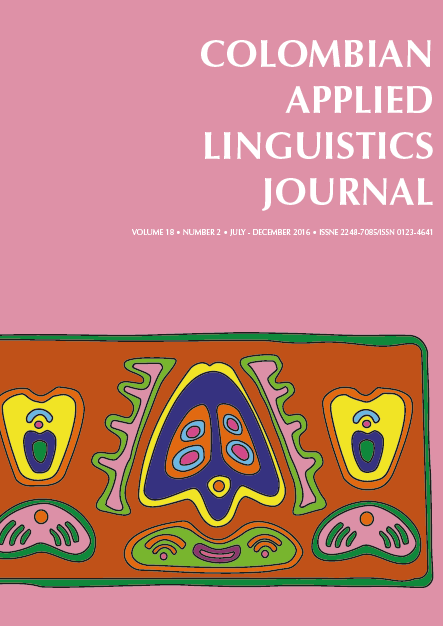
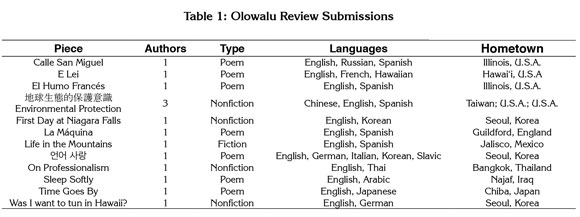
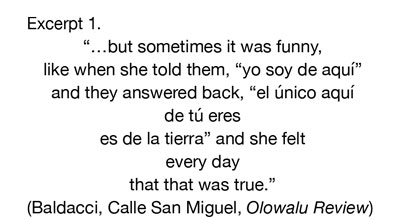
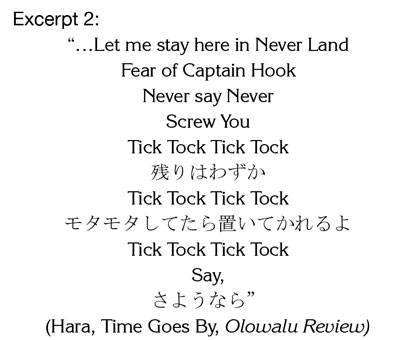
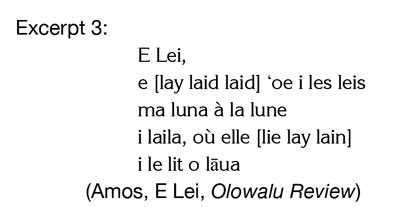











.JPG)



